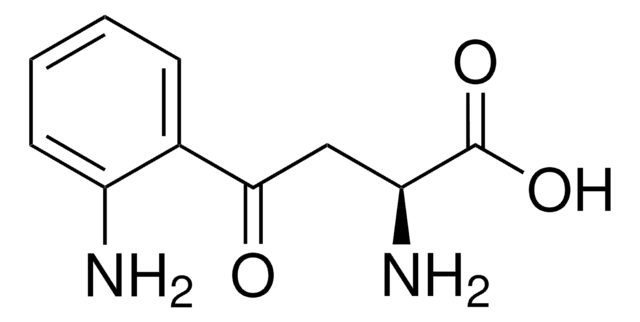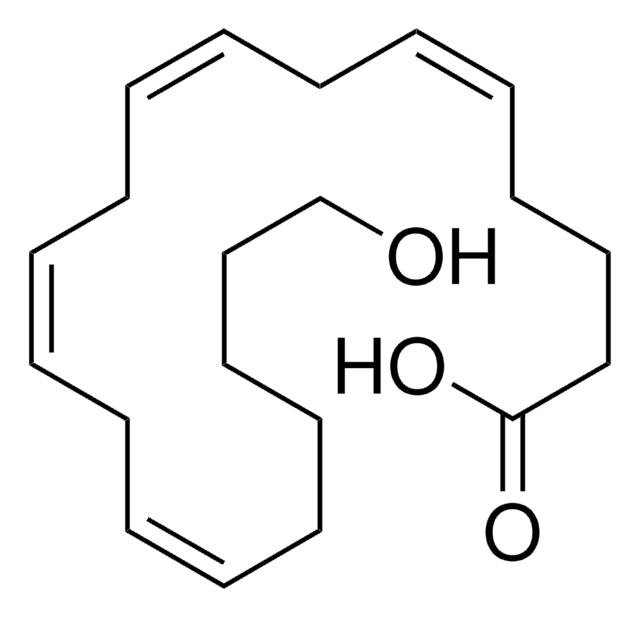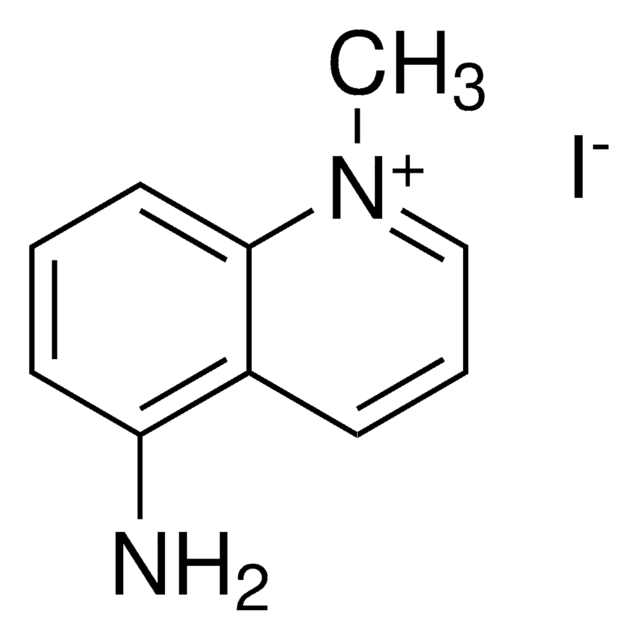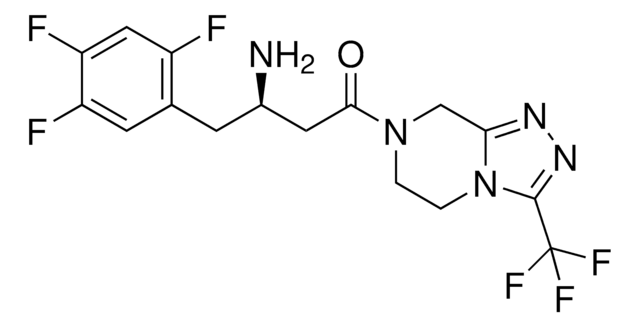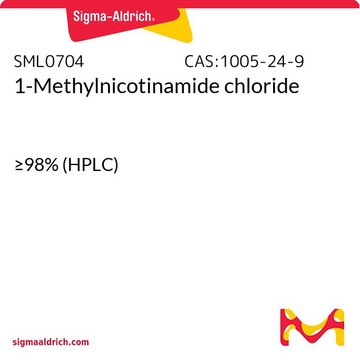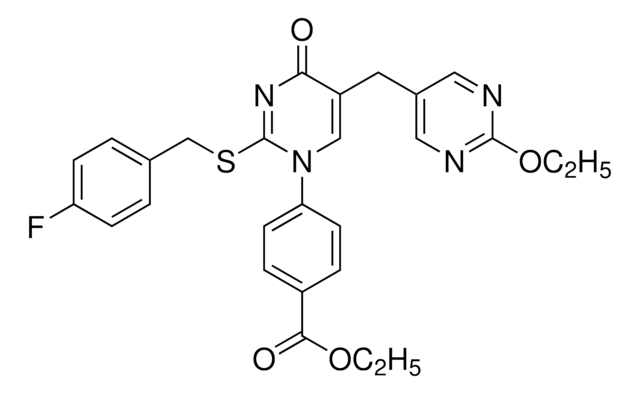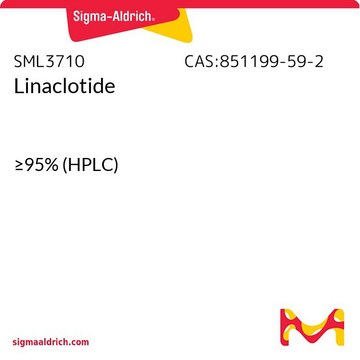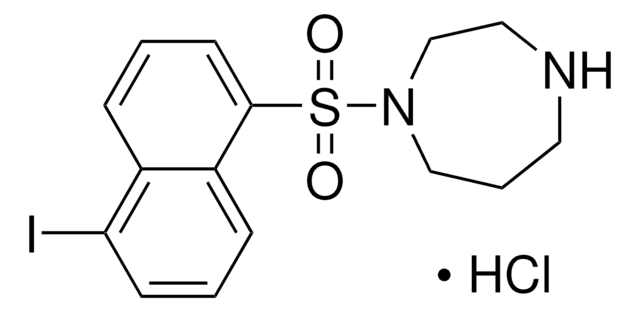SRP3269
RANTES human
Animal-component free, recombinant, expressed in E. coli, ≥98% (SDS-PAGE), ≥98% (HPLC)
Synonym(s):
CCL5, SIS-delta
Sign Into View Organizational & Contract Pricing
All Photos(1)
About This Item
UNSPSC Code:
12352200
NACRES:
NA.32
Recommended Products
biological source
human
recombinant
expressed in E. coli
Assay
≥98% (HPLC)
≥98% (SDS-PAGE)
form
lyophilized
potency
1.0-10.0 ng/mL
mol wt
7.8 kDa
packaging
pkg of 20 μg
impurities
<0.1 EU/μg endotoxin, tested
color
white
UniProt accession no.
shipped in
wet ice
storage temp.
−20°C
Gene Information
human ... CCL5(6352)
General description
Regulated on activation, normal T cell expressed and secreted (RANTES) also known as C-C motif chemokine ligand 5 (CCL5) is encoded by the gene mapped to human chromosome 17. RANTES belongs to intercrine or chemokine family of proinflammatory basic polypeptides and is expressed by various hematopoietic and non-hematopoietic cell types involved in homing and migration of effector and memory T cells during acute infections. Recombinant human RANTES is a 7.8kDa protein containing 68 amino acid residues including the four highly conserved cysteine residues present in the CC chemokines.
Application
RANTES human has been used in following studies:
- In transmigration experiments to determine whether LFA-1 cross-linking could affect peripheral blood T lymphocytes (PBTL) migration in response to the chemokine RANTES.
- Luminol-dependent chemiluminescence assay to determine the effect of RANTES on reactive oxygen species (ROS) production by eosinophils.
Biochem/physiol Actions
Regulated on activation, normal T cell expressed and secreted (RANTES) is a chemoattractant towards monocytes, dendritic cells (DCs), memory T cells (CD4+/CD45RO), basophils, and eosinophils. The encoded chemokine protein functions as a ligand for CCR1, CCR3, and CCR5.1 RANTES inhibits the action of R5 strains of HIV-1 via blocking CCR5 receptor. The In1.1C variant of RANTES gene is linked with susceptibility to HIV-1 infection and disease progression. Hence, this can be used as a potent biomarker to determine the prognosis of HIV-1 infection.
Physical form
Lyophilized with no additives.
Reconstitution
Centrifuge the vial prior to opening. Reconstitute in water to a concentration of 0.1-1.0 mg/mL. Do not vortex. This solution can be stored at 2-8°C for up to 1 week. For extended storage, it is recommended to further dilute in a buffer containing a carrier protein (example 0.1% BSA) and store in working aliquots at -20°C to -80°C.
Storage Class Code
10 - Combustible liquids
WGK
WGK 3
Flash Point(F)
Not applicable
Flash Point(C)
Not applicable
Regulatory Information
常规特殊物品
Choose from one of the most recent versions:
Certificates of Analysis (COA)
Lot/Batch Number
Don't see the Right Version?
If you require a particular version, you can look up a specific certificate by the Lot or Batch number.
Already Own This Product?
Find documentation for the products that you have recently purchased in the Document Library.
Inside the crawling T cell: leukocyte function-associated antigen-1 cross-linking is associated with microtubule-directed translocation of protein kinase C isoenzymes beta(I) and delta.
Volkov Y
Journal of Immunology, 161(12), 6487-6495 (1998)
A role for the chemokine RANTES in regulating CD8 T cell responses during chronic viral infection.
Crawford A
PLoS Pathogens, 7(7), e1002098-e1002098 (2011)
The Role of Genetic Polymorphisms in the
Chemokine and Their Receptors and Cytokines
in the Human Immunodeficiency Virus Type 1
(HIV-1) Infection
Chemokine and Their Receptors and Cytokines
in the Human Immunodeficiency Virus Type 1
(HIV-1) Infection
Nancy Dumais
HIV and AIDS - Updates on Biology, Immunology, Epidemiology and Treatment Strategies (2011)
J J Oppenheim et al.
Annual review of immunology, 9, 617-648 (1991-01-01)
A family consisting of at least ten distinct novel 8-10 kd cytokines has been identified over the past 12 years. These cytokines exhibit from 20 to 45% homology in amino acid sequence, are probably all basic heparin-binding polypeptides, and have
Upregulated response to chemokines in oxidative metabolism of eosinophils in asthma and allergic rhinitis.
Sannohe S
The European Respiratory Journal, 21(6), 925-931 (2003)
Our team of scientists has experience in all areas of research including Life Science, Material Science, Chemical Synthesis, Chromatography, Analytical and many others.
Contact Technical Service